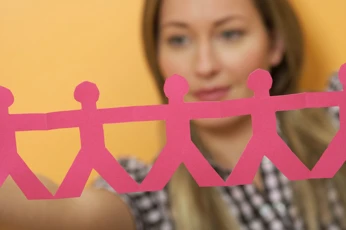*Disclaimer: We refer bridging clients onto our business partners to complete.*
What is a bridging loan?
A bridging loan is a short-term financing option designed to ‘bridge the gap’ between the purchase of a new property and the sale of an existing one. These loans are typically used in situations where timing is critical, and traditional mortgage options may not be feasible.

They can also be used for:
-
Buying a property at auction
-
Buying a house under market value where a quick completion is required
-
Buying a property that is deemed unsuitable for mortgage purposes with mainstream lenders (e.g. it has no kitchen or bathroom) in order to renovate it
-
Releasing equity from a property - for example, to pay a tax bill or divorce settlement
Different types of bridging loans
There are two different types of bridging loans:
- Closed bridging loans
With these, you’ll have a fixed repayment date. These will typically be used if you’ve exchanged contracts with a buyer but you’re waiting for the sale to complete.
-
Open bridging loans
These are different because there isn’t a fixed date when you’ll need to repay the loan. These could be used if you want to buy a house but you haven’t found a buyer for your current home yet. Alternatively, it might be useful if you’re an investor and you plan to renovate a property, then sell it to pay off the loan. While you won’t have a fixed repayment date, you’ll usually need to pay it off within one year.
Determining whether a bridging loan is right for you
Here are some key aspects to consider when evaluating whether a bridging loan is suitable for your circumstances:
Costs and fees
While bridging loans offer speed and flexibility, they often come with higher interest rates and associated fees compared to traditional mortgages. It's crucial to carefully weigh up the cost implications and ensure that the potential benefits justify the expenses involved.
Timeframe
Bridging loans are intended for short-term use, usually ranging from a few weeks to 12 months. While this provides a quick financial solution, it's essential to have a clear exit strategy for repaying the loan, such as through the sale of a property or securing a traditional mortgage.
Risk level
Bridging loans, like any other financial instrument, have inherent risks. If your intentions change and you are unable to return the loan within the agreed-upon term, you may face additional fees and financial difficulties.
Easing a property chain
Bridging loans can be a lifeline when facing challenges in a property chain. If you've found your dream home but haven't sold your current property, a bridging loan can help you secure the new property while giving you time to sell the existing one.
How much can I borrow?
This can vary hugely as lenders could loan anything from £30,000 to £50 million, depending on the borrower. However, the amount you can borrow will depend on the value of your property. Lenders may offer a maximum LTV of 65-80%, although you may be offered less depending on your circumstances.
No matter what you decide, it's always best to ensure you're making well-informed decisions that benefit your financial security.
Important information
Your home may be repossessed if you do not keep up repayments on your mortgage.
There may be a fee for mortgage advice. The actual amount you pay will depend on your circumstances. The fee is up to 1% but a typical fee is 0.3% of the amount borrowed.
You may have to pay an early repayment charge to your existing lender if you remortgage.
Related Articles
Getting a mortgage but don't know where to start?
Purchasing a home is a significant milestone in the lives of many individuals, and if you're looking at getting a mortgage but don't know where to begin, you're not alone.
What is the homebuying chain?
The homebuying chain can vary in length, be super simple or more complicated. What exactly is involved? And what on earth does gazumping mean?
Ready, steady, mortgage! Getting mortgage ready with the MyMAB App
A new survey has revealed that many buyers don’t feel ready to get a mortgage. Here’s how we can help.
No posts currently available




